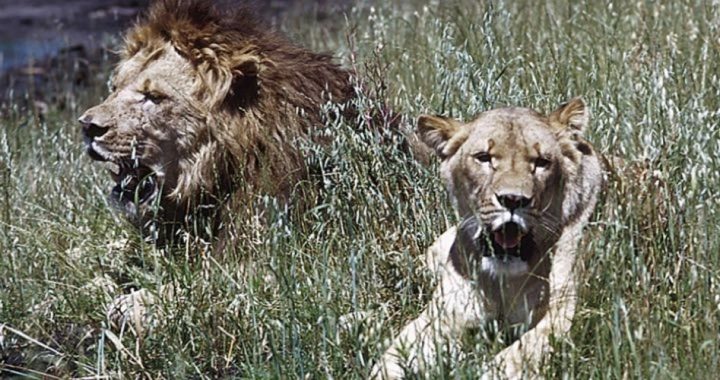
“Earth is on its way to the biggest mass extinction since the dinosaurs, scientists warn,” reads a recent headline. “Era of ‘Biological Annihilation’ Is Underway, Scientists Warn,” proclaims another.
And this is all bunk, a different scientist tells us.
Of course, that man has driven and is driving certain species to extinction is true and tragic. We’re obliged to be good shepherds of the Earth and respect creation. But we can’t solve problems if we prefer fiction to fact.
The headline-spawning study, published Monday in the Proceedings of the National Academy of Sciences, makes the case that “thousands of animal species are in precipitous decline, a sign that an irreversible era of mass extinction is underway,” as the New York Times puts it. “In most parts of the world,” the paper later writes, “mammal populations are losing 70 percent of their members because of habitat loss.”
The Atlantic provides the example of lions, “whose numbers have dropped from 1 million at the time of Jesus to 450,000 in the 1940s to 20,000 today — a decline of 98 percent.”
Interestingly, one of the study’s authors is Stanford University biology professor Paul Ehrlich, who penned the 1968 book The Population Bomb. He has admitted in reference to the current research, “I am an alarmist. My colleagues are alarmists,” and this is true. What he’s not is generally honest.
As Walter E. Williams pointed out in 2008, Ehrlich “predicted there would be a major food shortage in the U.S. and [that] ‘in the 1970s … hundreds of millions of people are going to starve to death.’ Ehrlich forecasted that 65 million Americans would die of starvation between 1980 and 1989, and by 1999 the U.S. population would have declined to 22.6 million [it’s now 326 million]. Ehrlich’s predictions about England were gloomier: ‘If I were a gambler, I would take even money that England will not exist in the year 2000.’”
Today Ehrlich says about mass-extinction episodes, “We are now moving into another one of these events that could easily, easily ruin the lives of everybody on the planet.”
Question: Would you take investment advice from someone with a history of losing stock predictions? Why is anyone still listening to this man?
Smithsonian paleontologist and extinction-event expert Doug Erwin implies that we shouldn’t because we’re not — in a mass extinction. Quoting him, the Atlantic writes, “‘If it’s actually true we’re in a sixth mass extinction, then there’s no point in conservation biology.’ … This is because by the time a mass extinction starts, the world would already be over.”
It’s also true that 99 percent of the Earth species that ever existed no longer do; as with individuals and civilizations, species eventually die.
None of this means we should dismiss matters here, because there is a problem: Species are disappearing and many more are threatened. But upon reading people’s conceptions of the causes (in comments sections, for example) — mainly, overpopulation, consumption, and climate change — it’s clear our cures may be errant because our diagnoses are.
Myth: The world’s human population is increasing inexorably.
Reality: Fertility rates are below replacement level (2.1 children per woman) in the better part of 100 nations, a number growing continually. Western and Eastern European countries, and lands such as Japan, have aging native populations in precipitous decline. Even the fertility rate of Mexico, whose women once had almost seven children each, is now 2.3 — and falling.
Consequently, demographers report that the Earth’s population will begin decreasing after 2070.
Myth: Man-caused “climate change” threatens species.
Reality: While naturally occurring climatic changes (i.e., ice ages) have caused past extinctions, we don’t know of one species meeting its end because of so-called anthropogenic global warming. The man-caused problems threatening wildlife are habitat loss and, to a lesser extent, pollution.
Myth: The problem is that the Third World wants to live like us, when in reality consumption must be curtailed.
Reality: Most of the habitat loss and threatened species are in Third World countries. In contrast, the United States has more forested area now than 100 years ago, with the forest volume being 380 percent greater than in 1920. Consequently, animals such as bears, cougars (a friend saw one in upstate New York), and moose are returning to old northeastern habitats.
Why more forest now? The modern economic phenomenon of urbanization, while causing city sprawl, also means people live more densely clustered. Moreover, industrial farming and livestock production mean far greater yield per acre, reducing the land area needed to feed the population. And abandoned land returns to nature.
In addition, wealthy peoples care about, and can afford to, take care of the environment. A Third World family suffering privation won’t hesitate to burn jungle for subsistence farming or kill an endangered animal to feed the children. They’re desperate.
The point? If this Western economic phenomenon — associated with wealth creation and far greater consumption — means more wildlife in the United States, why wouldn’t it mean the same in Africa? So it’s not that Third Worlders can’t live as we do. It’s that they must live as we do.
The first step in preserving the environment is to stop polluting the environmental debate with lies.


